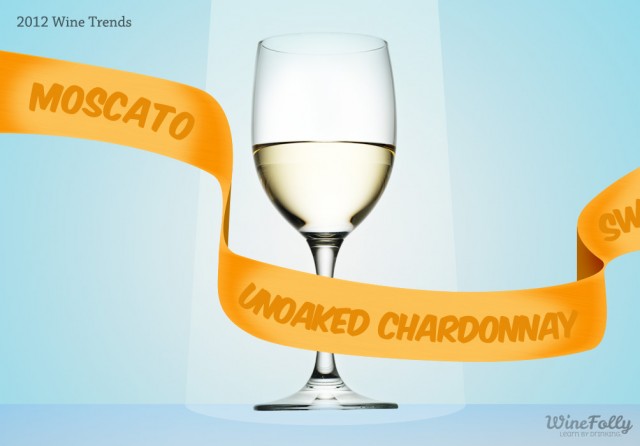Regardless of what you’re drinking, 2012 is a good year for wine. You can pat yourself on the back for being part of a wine-enthusiastic public, partially thanks to increased wine tourism and decreased regulation. Here is a list of the current 2012 wine trends and what’s worth drinking. The most interesting take away is the serious bump in sweet wines and production increases of rose wines to meet the demand.
1. Wine in a Beer Keg?
Since there are more wineries located within cities, wine on tap has been increasing in number. Imagine a beer keg that is pumped with argon or nitrogen instead of CO2 and filled with wine direct from a winery. The kegs most commonly used for wines-in-a-keg hold about 130 glasses of wine. The benefits of having wines on tap are that they are refillable and ecologically friendly. No more glass recycling or time wasted as your server struggles with the cork.
- In Seattle, WA, Proletariat Wine Co. produces high quality wines and has them tapped in over 30 restaurants in the Seattle area. Check out proletariatwines.com
2. Grown-Up Lemonade: Pinot Noir Rose
With the growing popularity of rose happening around the world, rose of pinot noir has created its own micro-niche. The color of pinot noir rose ranges from pale peach to salmon. Smelling of fresh strawberry and having higher acidity, rose is a succulent pairing for light fish, cream-based dishes or even salad. The 2010 and 2011 vintages in the United States were much cooler vintages producing ideal conditions for some of the best rose produced.
- 2011 Toad Hollow Pinot Noir Rose from California
- 2011 Robert Synskey Carneros Organic and Biodynamic Pinot Noir Rose from California
- 2011 Patton Valley Pinot Noir Rose from Oregon
3. Moscato’s Thug Life

A younger wine drinking public under the influence of pop culture may have played a major role in the 56% increase of sales of moscato.(1) The wine-epic drama Sideways helped spike sales and prices of pinot noir and Waka Flocka Flame introduced a moscato to the masses.
Moscato or muscat is typically quite low alcohol, sweet and slightly frizzante (bubbly). Some of the most notable moscatos come from Asti, Italy and can be enjoyed with or without pants.
- 2011 Saracco Moscato d’Asti from Italy (5% ABV)
- Non-Vintage (NV) Golan Moscato from Israel (6% ABV)
[superquote]”I’m a sip Moscato and you gon’ lose them pants.”[/superquote]
4. Less Butter In My Chardonnay
Sales in unoaked chardonnay have skyrocketed by over 100%.(1) The boost may be a result of a general move away from the “butter chardonnay” effect that does not enthuse the younger wine drinkers. Unoaked chardonnay is generally cheaper (because it’s cheaper to produce) and it tends to pair better with a wider variety of foods. Chardonnay in general is hot sh*t because in 2011, The Hospices de Beaune (representing the Burgundy wine region) reported that sales in Chardonnay were well over pinot noir at 60 percent.
- Check out the full article on unoaked chardonnays where we mention a few worth checking out
5. Give Me Something Sweet, Red and Sparkly
Perhaps it is the popularity of fruit forward red wines and the god-forsaken but increasingly popular wine and chocolate pairing that introduced residual sugar (aka sweet red wines) back into the picture. Currently it’s difficult to find sweet red wines that are not just commercially marketed crap. There is, however, a growing market that has potential: Lambrusco. Lambrusco is from an ancient wine growing region in Italy. Currently, the oldest running producer in the region is Cleto Chiarli who opened up shop in 1860. The higher quality lambruscos have delicate strawberry notes, balanced acidity and a mineral texture that is not dissimilar to licking gravel. Sounds delicious!
- Lini “Labrusca” Lambrusco Rosso Emilia ~$14 on klwines (established in 1910)
- Vezzelli Lambrusco a drier style ~$15 on winelibrary.com (established in 1958)
- Cleto Chiarli Lambrusco distributed through Dalla Terra (established in 1860)
6. Finding Value in Unique Varietals
A thirsty public that has less money to spend on their wine habit look towards less popular varietals for great values. Red wines like Zweigelt, St. Laurent, Touriga Nacional and Lemberger(aka Blaufrankish) provide a range of flavor from light (zweigelt) to dense (Touriga N.) and cost around $10-15. White wines like Gruner Veltliner, Picpoul, Antao Vaz, Gros Manseng and Ugni Blanc taste similar to their cousins from Sauvignon Blanc (Gruner V.) to Chardonnay (Antao Vaz) but cost only about $10. Restaurants are probably to be applauded for this trend by adding less popular varietals to their glass pour list because the profit margin is higher. As the public becomes more open-minded to seeking out unique varietals we’ll see wine regions trying harder to preserve indigenous varieties that are all but lost. Here are a few worth trying:
- Esparao Antao Vaz from Portugal (tastes simliar to oaked chardonnay)
- Kiona Estate Lemberger from Washington State, USA (tastes like a richer, bolder pinot noir)
- Leth Gruner Veltliner Steinagrund 2011, Austria (tastes similar to a zesty sauvignon blanc or pinot grigio)
7. Boutique Whites Get Oaked
There is an uptick in oak aging white wines, but it’s not chardonnay. Oak aging varietals like sauvignon blanc and semillon are growing in popularity in Washington State. In Portugal, oak-aging indigenous varietals including a bizarre grape called antao vaz, has wine drinkers delighted. The production is small for now, but with recent acclaim in wine ratings magazines and estates continually selling out of stock this will be an increasing trend.
Sources
1. “demand for unoaked chardonnay increased over 100%” – Pennlive
